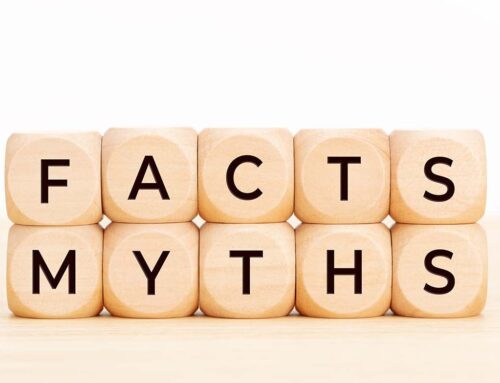 An annuity is an insurance product that pays out guaranteed income and can be used as part of a retirement strategy. The income you receive from an annuity can come monthly, quarterly, annually, or even in a lump sum payment. But what about Uncle Sam’s request for taxes on that money?
An annuity is an insurance product that pays out guaranteed income and can be used as part of a retirement strategy. The income you receive from an annuity can come monthly, quarterly, annually, or even in a lump sum payment. But what about Uncle Sam’s request for taxes on that money?
In general, the amount you contributed to the annuity isn’t taxed, but your earnings are taxed at your regular income tax rate. You fund a qualified annuity with pre-tax dollars, and a non-qualified annuity is funded with post-tax dollars. This impacts the tax treatment of your payouts; allowing you to save by investing and deferring tax payments.
For example, If you deposited $40k into a nonqualified annuity and the account grows to $100k, you will only be taxed on the $60k earnings/interest. Since the earnings are distributed first, taxes are paid upfront until you draw back down to the principal deposit.
Qualified annuities are subject to Required Minimum Distribution (RMD) guidelines. You must begin taking distributions from a qualified annuity by April 1 of the year after you turn 72.
Non-qualified annuities are exempt from RMDs. Once you start taking distributions from a non-qualified annuity, any interest or earnings within the annuity will be distributed before the premium or principal amount.
Unlike other tax-deferred retirement accounts such as 401(k)s and IRAs, There typically isn’t an annual contribution limit for an annuity. That could allow you to put away more money for retirement and the money you put into the annuity compounds year after year without any tax bill from Uncle Sam. That ability to keep every dollar invested working for you can be a significant advantage over taxable investments.
If you’re concerned about how taxes will affect your retirement income, or you’re interested in an annuity’s tax-free growth potential, we’d like the opportunity to answer your questions. Call our office today at (540) 720-5656.









 Amy Anderson joined the ILG Financial team in 2023 as the client relations coordinator. Her responsibilities include scheduling of appointments, annual check-up notifications, and annuity and required minimum distribution assistance. She is a graduate of Harding University with a degree in Computer Information Systems. Amy and her husband have two children and she enjoys reading, crocheting, music and spending time with her family.
Amy Anderson joined the ILG Financial team in 2023 as the client relations coordinator. Her responsibilities include scheduling of appointments, annual check-up notifications, and annuity and required minimum distribution assistance. She is a graduate of Harding University with a degree in Computer Information Systems. Amy and her husband have two children and she enjoys reading, crocheting, music and spending time with her family. Chase Lopez joined the ILG Financial team in 2020 as an advisor. Chase is a 2016 James Madison University graduate with a degree in management. Chase has been trained under the tutelage of Dave Lopez, who is not only the founder and managing member of ILG Financial, but also is Chase’s uncle and godfather. He also enjoys working alongside his cousin, Megan, who is Dave’s daughter. Chase, as a fiduciary, believes in putting his clients interests first, and building out plans for his clients where they can have a happy and fruitful retirement. He married his beautiful wife in February 2022 and both use most of their free time chasing around their little pup, Aurora.
Chase Lopez joined the ILG Financial team in 2020 as an advisor. Chase is a 2016 James Madison University graduate with a degree in management. Chase has been trained under the tutelage of Dave Lopez, who is not only the founder and managing member of ILG Financial, but also is Chase’s uncle and godfather. He also enjoys working alongside his cousin, Megan, who is Dave’s daughter. Chase, as a fiduciary, believes in putting his clients interests first, and building out plans for his clients where they can have a happy and fruitful retirement. He married his beautiful wife in February 2022 and both use most of their free time chasing around their little pup, Aurora. Jessica Carson joined the ILG Financial team in 2018 as an agent. Jessica and her husband have four children, two dogs, 3 barn cats, 5 chickens, and three parakeets. She indeed loves her children and pets! When not at work, Jessica enjoys playing the piano and cello as well as traveling and spending time outside with her family, hiking, fishing, and boating.
Jessica Carson joined the ILG Financial team in 2018 as an agent. Jessica and her husband have four children, two dogs, 3 barn cats, 5 chickens, and three parakeets. She indeed loves her children and pets! When not at work, Jessica enjoys playing the piano and cello as well as traveling and spending time outside with her family, hiking, fishing, and boating. Terri Center joined the ILG Financial team in 2019 as client services manager. She handles client records, application processing, and gathering information to provide a professional and friendly experience with all of our clients. Terri is a graduate of Oakland University. She is married and has two children. She enjoys hiking, family time, and puzzle challenging video games. She also likes to share her creativity in her canvas paintings and sewing projects.
Terri Center joined the ILG Financial team in 2019 as client services manager. She handles client records, application processing, and gathering information to provide a professional and friendly experience with all of our clients. Terri is a graduate of Oakland University. She is married and has two children. She enjoys hiking, family time, and puzzle challenging video games. She also likes to share her creativity in her canvas paintings and sewing projects. Megan Jones joined the ILG Financial team in 2020 as marketing director. Megan and her husband live in Fredericksburg, VA with their German Short Haired Pointer, Gus. Megan is a graduate of Longwood University and holds a degree in communications. Megan is the oldest of Dave Lopez’s three children and not only enjoys working alongside her father, but also with her cousin, Chase, who joined the ILG Financial team in 2020 as an advisor. When not at work, Megan enjoys sitting on the back porch with family and friends enjoying food and music.
Megan Jones joined the ILG Financial team in 2020 as marketing director. Megan and her husband live in Fredericksburg, VA with their German Short Haired Pointer, Gus. Megan is a graduate of Longwood University and holds a degree in communications. Megan is the oldest of Dave Lopez’s three children and not only enjoys working alongside her father, but also with her cousin, Chase, who joined the ILG Financial team in 2020 as an advisor. When not at work, Megan enjoys sitting on the back porch with family and friends enjoying food and music.